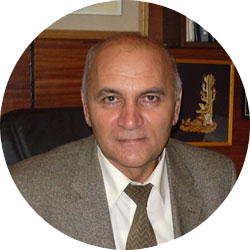RF Patent # 2155717. Filed 28.01.2000, published 10.09.2000.
Bakhir V.M.
The given invention describes the principle and technology of non-contact electrochemical activation. Effect of non-contact action produced by electrochemically activated water and aqueous solutions on non-activated liquids was discovered by the author in 1987 and described in his monograph ”Electrochemical Activation” in 1992. The mechanism of this phenomenon is still unclear, however, under optimal combination of non-contact action conditions, several versions of which were found empirically, there is 100% recurrence of change of redox potential (to a higher degree) and electric conductivity (to a lesser degree) of water or aqueous solution of electrolytes, separated by impermeable thin dielectric partition from water or aqueous solution of electrolytes in a meta-stable (activated) state after unipolar (anodic or cathodic) electrochemical exposure. In the process of non-contact electrochemical activation, the ratio of volumes of activated and non-activated media separated by a dielectric partition, its material and thickness, area of interaction (area of dielectric partition) and contact duration are essential.
The findings of experimental studies of non-contact electrochemical activation processes indicate that non-contact electrochemical exposure is a real possibility to purposefully regulate physical and chemical solution properties without altering their chemical composition. By controlling solutions’ redox potential it is possible to change their activity in oxidation-reduction reactions and in this way directly impact various technological processes. Besides, by purposefully regulating the redox potential of solutions entering the human body, for instance, beverages, solutions of medicinal agents or biological body fluids, we can enhance the positive effect on the organism of oxidation-reduction reactions occurring in the human body with participation of the above solutions and fluids.
